21 July 2006
Up on the cliffs above the beach, in front of the handsome old Crescent buildings, I found a splendid area of park and planting. Then, further into the town, a few photos of things observed.
| 2
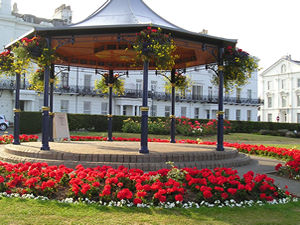
This bandstand stands in the middle of a large formal park. The park’s flowerbeds were full of bedding plants, arranged in conventional blocks of colour. I don’t normally like this kind of thing, and on roundabouts it looks silly. But here it looked perfect, stunning in fact. No doubt helped by the summer’s good weather, but I imagine this takes a lot of thought and a lot of maintenance.
Behind the park area with its bandstand is The Crescent, visible on this photo – six stuccoed blocks of elegant accommodation, the first of which was built in 1840-1. The Pevsner guide says that The Crescent "is what made Filey and it still today gives the town its distinctive and refined character."
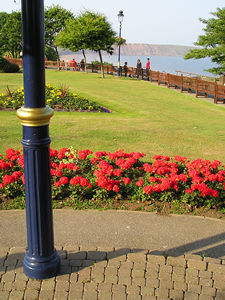
The bandstand was an unexpectedly moving place. Inside, around the roof, are scores of small plaques, commemorating loved ones. I imagine that perhaps donations were given to make this place, in memory of local residents and visitors who came here for holidays. "Frank thought Everything and Everyone in Filey was "beautiful", read one of them. Isn’t it embarrassing when you’re in a public place and read something that makes you cry. Fortunately the only people who could see me where a group of senior citizens sitting nearby, and they were busy making arrangements on a mobile phone.
This photo was taken from inside the bandstand looking out, across the bright bedding plants and the tidy lawns of the park, to the benches, with the sea and the coastline visible in the distance.
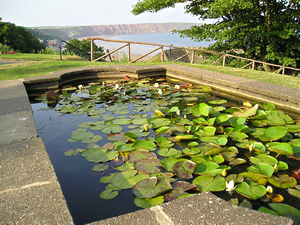
There’s even an ornamental pond, with fish and water lilies. With all these things of a relaxing nature to look at – the flowers, the fish, the green of the park and the blue of the sea, I can’t imagine that anyone in Filey is suffering from stress-related problems. I guess it might be boring if you’re an adolescent – just the kind of place that would make you want to move to London or Leeds. But I bet you’d come back.


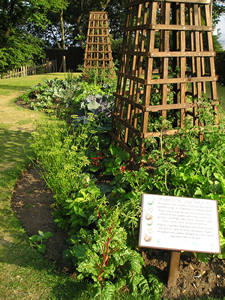
You may be surprised to see these vegetables above appearing in the middle of this page about Filey’s parks and buildings – just as I was surprised when I discovered this unusual bit of municipal planting in the midst of otherwise conventional bedding schemes. One bed in the park had been given over to growing ornamental vegetables, with a helpful sign explaining the project.
They looked fantastic – helped no doubt by the good weather, and the fact that weeks of dry sunny days has kept the slugs and snails away. The lush and colourful leaves of chard (above left) and what I think is an ornamental cabbage (above right) were perfect, untouched by pests.
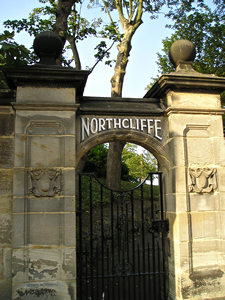
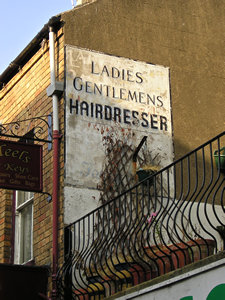
I always noticed things like this about a place, but it’s only now I’m carrying a digital camera that I can record them. Here, two very different signs painted. One on old stone, one on a more modern rendered wall. Northcliffe’s gateway is very grand. The house was designed by Brierley, a well-known architect who designed many of York’s Victorian board schools.
Just up the road, in a side street, an old and faded painted advert for a Ladies and Gentlemens Hairdresser.
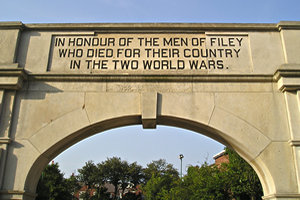
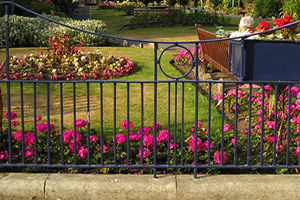
Further up the road into the town, Filey’s war memorial – a garden with a stone gateway, which is inscribed "In honour of the men of Filey who died for their country in the two World Wars". Inside there are more well-kept flowerbeds, bright under the summer sun.
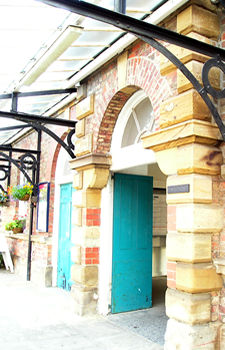
In the course of compiling these pages and looking at buildings I’ve developed a couple of particular passions – firstly, for nonconformist chapels, and secondly, for railway-related things, particularly small railway stations and abandoned railway lines.
Filey’s line isn’t abandoned, but it isn’t exactly busy. There was only one person on the platform waiting for the late afternoon train. Still, at least the town still has a railway service.
This is the handsome entrance to Filey station, designed by G T Andrews. The station, says Pevsner, is "Andrews at his best". G T Andrews was a busy architect in the middle of the 19th century. This station was built in 1846, five years or so after the opening of Andrews’ station at York (now railway offices on Tanner Row).
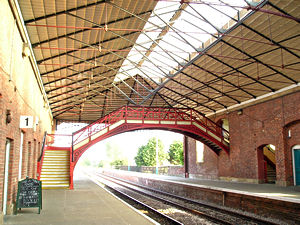
Later alterations to Filey station were made in 1865 by Thomas Prosser, who was also the architect who submitted the initial designs for York’s second railway station (the current station).
I’m not sure which architect was responsible for the bridge – a good-looking iron structure – but it looks like it might be a later addition, from the way it goes rather oddly through the brick wall on the opposite platform.
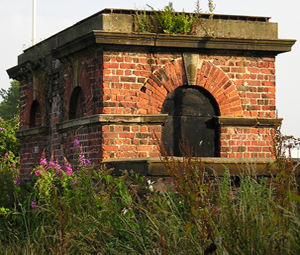
The station buildings seemed a shadow of their former selves, much changed since the enthusiastic expansion of the railways in the mid-nineteenth century. A bygone age was best summed up by the area to one side of the station, where among the weeds this still rather pleasing brick and stone building remains. At one time, I think, it supported the iron water tank, which held the water for the steam trains. Some of these structures remain close to Victorian stations, but as far as I can see, most lost their tanks long ago.
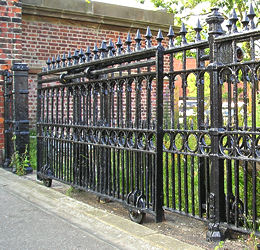
Next to the water tank building, between it and the main body of the station, are these gates. Looking closely, I noticed that they’re sliding gates, with sections that move on wheels that at one time ran in grooves. The tracks are silted up, and the gates look like they haven’t moved for a long time.
Still handsome though, and more ornate than they need to be, just like the small building above that supported the water tank. Both illustrate how the Victorians felt about their railways, whereas the emptiness of the station on the day I visited probably illustrates how we feel about the railways now.
I’ve just checked, and apparently you can get from York to Filey in just over an hour by train (depending on the service – some take longer), changing once at Seamer. Though, like most people, we came by car.
We’ve visited Filey a few times in recent years, but this was the first time I’d taken my camera, and the first time I’d taken notice of historical and architectural details. It’s interesting to see how towns developed when the railways brought new visitors to them, and how even in the Victorian period, tourists were looking for new destinations, perhaps quieter ones, more genteel. Filey has had to change to keep up with changing tastes, but thankfully it hasn’t filled its seafront with ugly old tat. It’s a fine place, still, two hundred years after the mention of its charms in the Gentleman’s Magazine.
| 2
More information
Bill L’s website | A brief history of Filey | www.fileybay.com | Cobles of the East Coast





Thank you for adding a comment. Please note that comments are moderated, but should appear within 24 hours.